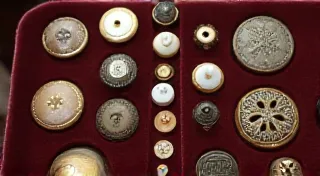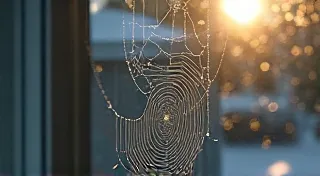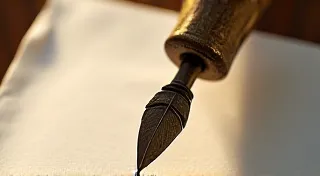Collecting Vintage Sheet Music: A Journey Through Time and Melody
Welcome to a world where ink stains whisper stories, faded notes evoke forgotten eras, and the fragile paper holds the echoes of a vibrant musical past. This website is dedicated to the fascinating hobby of collecting vintage sheet music – a pursuit that transcends mere acquisition, becoming a gateway to music history, social commentary, and personal narratives.
Why Collect Vintage Sheet Music?
For the uninitiated, the appeal of sheet music might seem confined to its primary function: providing instructions for musicians. But delve a little deeper, and you're confronted with a rich tapestry of artistry, ingenuity, and cultural significance. Each piece of vintage sheet music is a microcosm of its time, reflecting the prevailing musical tastes, artistic trends, and social values of the era in which it was created. It's a tangible link to the past, offering a unique window into the lives and aspirations of composers, performers, and audiences alike.
Beyond the notes themselves, consider the exquisite artwork that adorned many sheet music covers. These weren't simply decorative elements; they were integral to the marketing and promotion of the music. The “Dance of the Margins: Visual Art & the Storytelling of Sheet Music Covers” examines how visual art and typography worked together to create a compelling narrative, influencing public perception and fueling musical trends. From Art Nouveau flourishes to bold, modernist designs, the covers themselves are miniature works of art.
The Historical Landscape: Geographical and Temporal Perspectives
The evolution of sheet music isn't just a linear progression; it's a complex interplay of geographical influences and shifting musical tastes. The “Beyond the Notes: Mapping Geographical Influences on Sheet Music Styles” takes a broad look, demonstrating how different regions fostered unique musical expressions reflected in sheet music. Think of the differences between a Parisian waltz and a New Orleans rag—each carried its own cultural identity within the printed score.
Understanding the passage of time is equally critical. “Chromatic Cartography: Mapping Musical Taste Through Sheet Music Eras” demonstrates how musical preferences changed across decades, and how that change is readily visible when you analyze sheet music from different periods. The emergence of new genres, the adoption of new instruments, and even the evolution of musical notation are all recorded within these fragile pages. The fleeting nature of popularity is also revealed; “Ephemeral Rhythms: Sheet Music and the Fleeting Nature of Popularity” explores how quickly a song could rise and fall from favor.
The Voices of Creators, Publishers, and Annotators
While composers and performers often receive the most attention, the individuals and companies responsible for bringing the sheet music to the public are frequently overlooked. “The Unsung Voices of the Copyright Page: Identifying Publishers and Their Impact” sheds light on these vital figures, tracing the evolution of publishing houses and their contributions to the dissemination of music. Their practices shaped the availability and accessibility of sheet music for musicians and audiences alike. “Inkwell Echoes: Letters and Annotations in the Hands of Musicians” then shows the personal connection formed by performers, marking their individual touch on history.
Performance Practices and the Evolution of Notation
Sheet music wasn't created in a vacuum. It reflects and responds to the social and political climate of its time. “The Paper’s Testimony: Revealing Social Commentary Through Song Lyrics” explores how lyrics often carried subtle (and sometimes not-so-subtle) messages about social issues, political events, and cultural norms. “The Faded Ink of Dreams: How Sheet Music Inspired Aspirations” explores how music fueled dreams and defined lives.
The physical form of sheet music itself played a role in its reception and dissemination. “A Spectrum of Binding: How Sheet Music Form and Presentation Shaped Its Fate” investigates the evolution of different binding methods, formats, and cover designs, demonstrating how these features influenced the accessibility and appeal of the music. The adoption of printing technology, explored in “The Ledger’s Lament: How Printing Technology Shaped Musical Accessibility,” was a pivotal moment. And understanding performance nuances, as discussed in “The Silent Symphony of Ornamentation: Deciphering Performance Nuances in Vintage Scores”, adds another layer to appreciation.
Preservation, Authenticity, and a Snapshot of Time
Unfortunately, vintage sheet music is a fragile commodity, susceptible to the ravages of time and environmental damage. “The Paper’s Fragility: Environmental Factors and Preservation Strategies” discusses the challenges of preserving these historical treasures, offering practical advice on proper storage, handling, and restoration techniques.
Ensuring authenticity is also paramount. “Resonances of the Past: Authenticity and Restoration in Sheet Music Conservation” deals with the complexities of verifying the provenance of sheet music and the ethical considerations involved in restoration efforts.
Each piece of sheet music is a “Ink Stains and Echoes: Sheet Music as a Palimpsest of Time.” It carries layers of history - from the initial printing, to the annotations and markings added by musicians, to the stains and creases accumulated over decades of handling. Each mark tells a story, contributing to the overall narrative of the piece.
Social Context and Legacy
“Shadows of the Salon: Sheet Music’s Role in 19th Century Social Gatherings” examines the important role it played in 19th-century gatherings, serving as a focal point for entertainment, social interaction, and cultural expression. A deeper understanding is gained when observing “A Mosaic of Memory: Sheet Music as a Repository of Personal Narratives” – how music provided an emotional link to a time gone by.
Beyond the Notes
“The Ghosts in the Staff Lines: Unearthing Forgotten Composers” also sheds light on composers often lost to history. And the simple measurement of time, as noted by “The Metronome’s Quiet Witness: Tracking Tempo Shifts in Musical Eras,” can reveal surprising trends and changes in musical preferences.
Final Thoughts
Whether you're a seasoned collector or just beginning to explore the world of vintage sheet music, we hope this website provides a valuable resource for learning, discovery, and appreciation. Happy collecting!


















